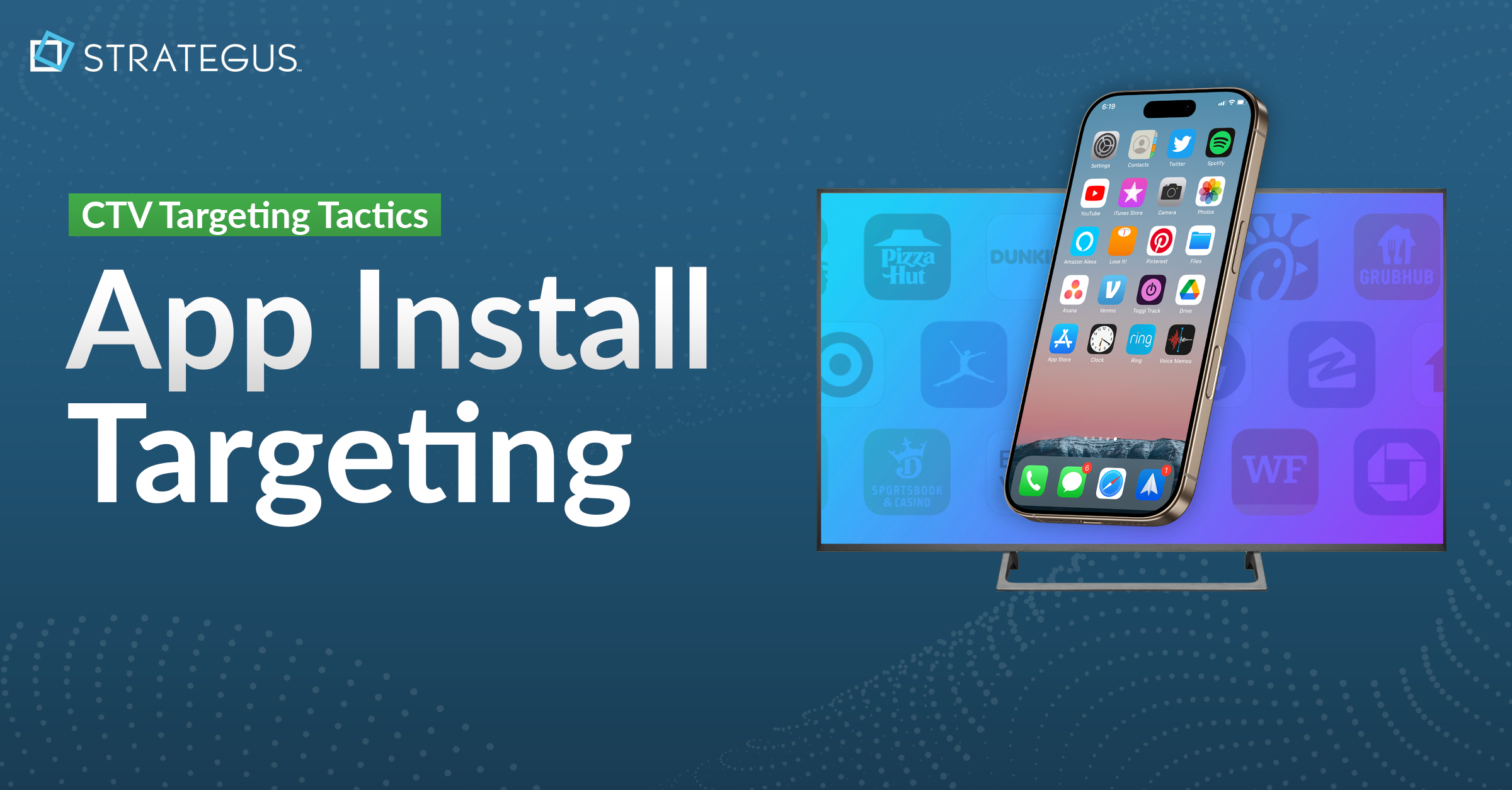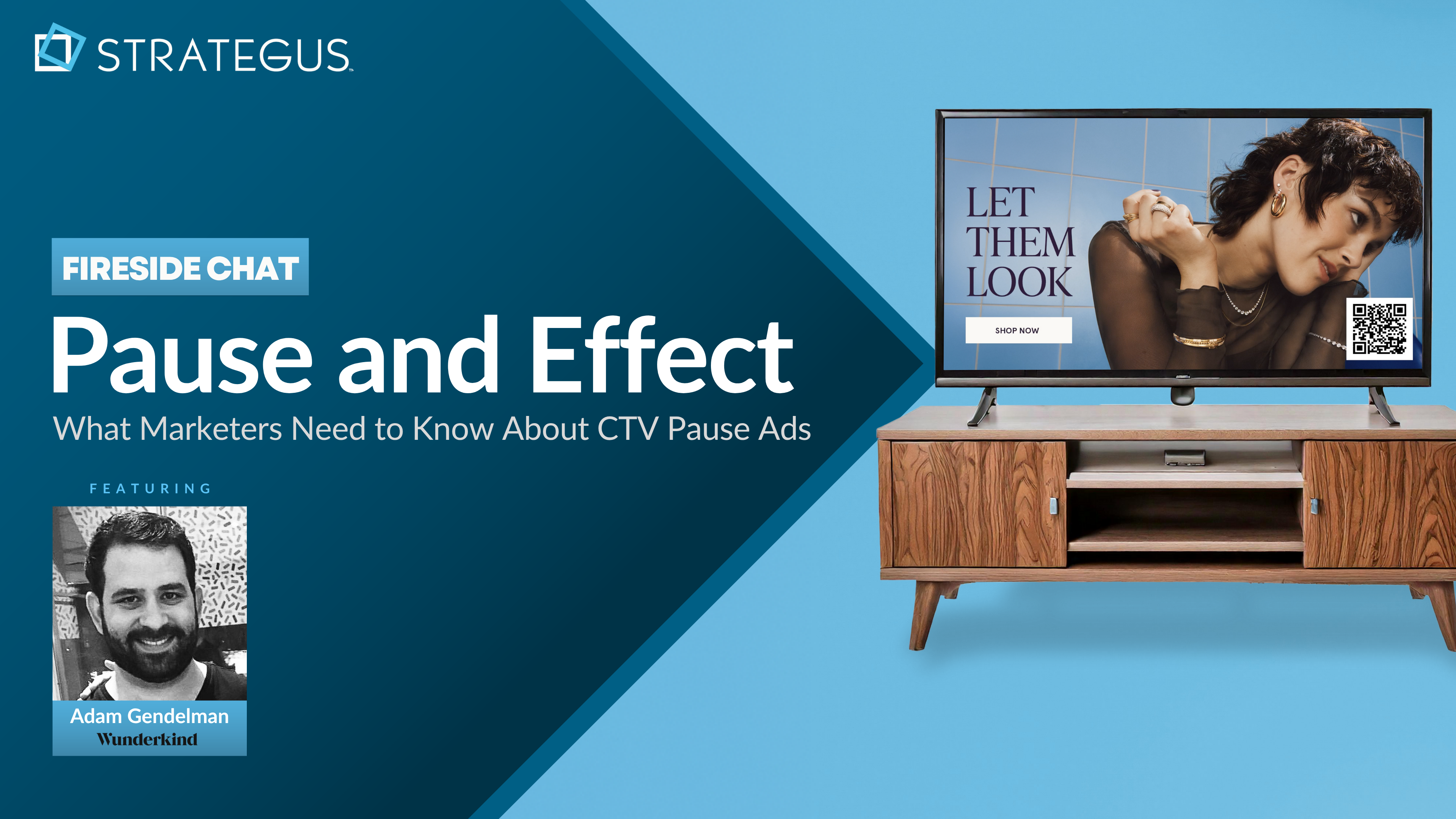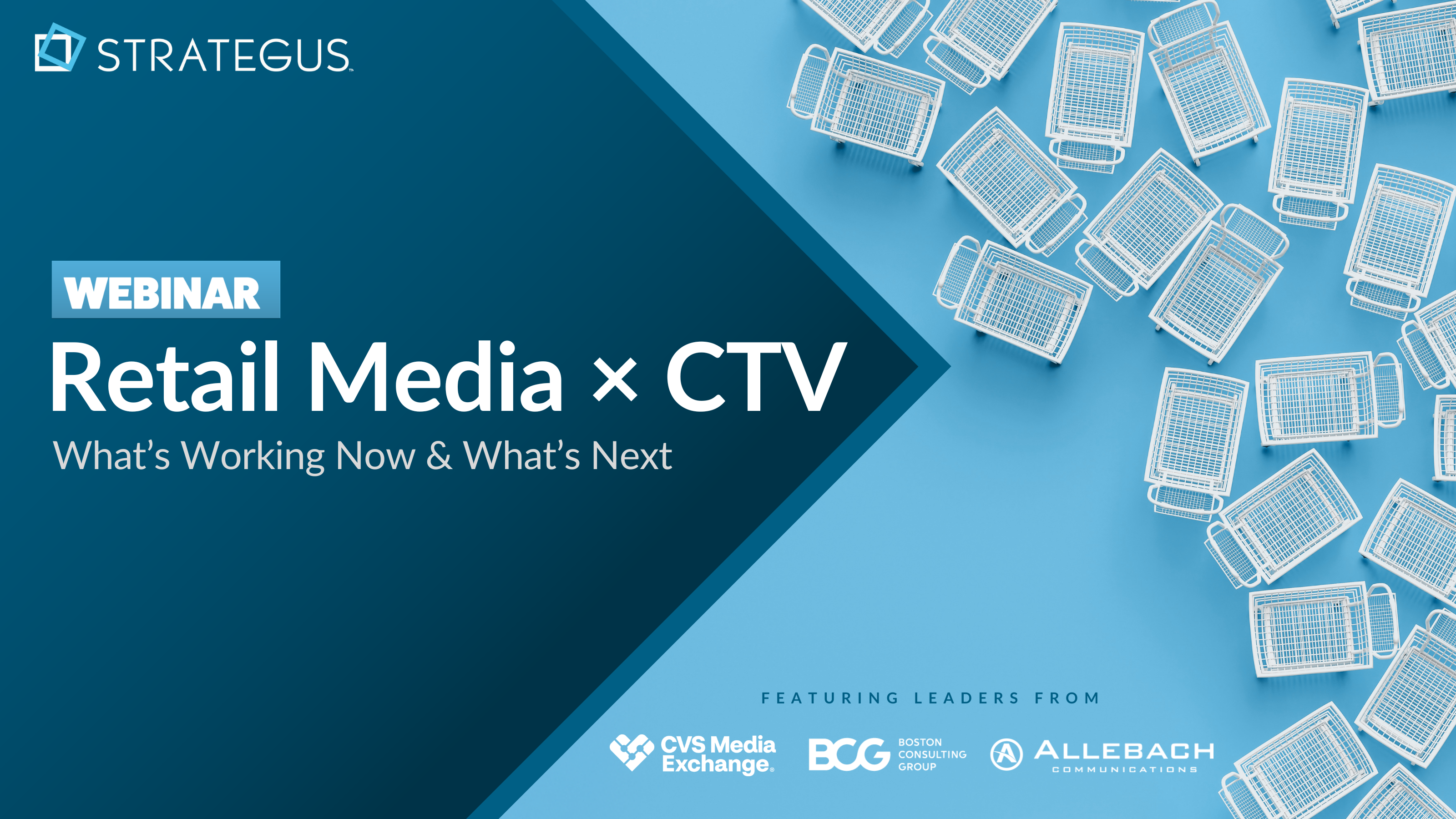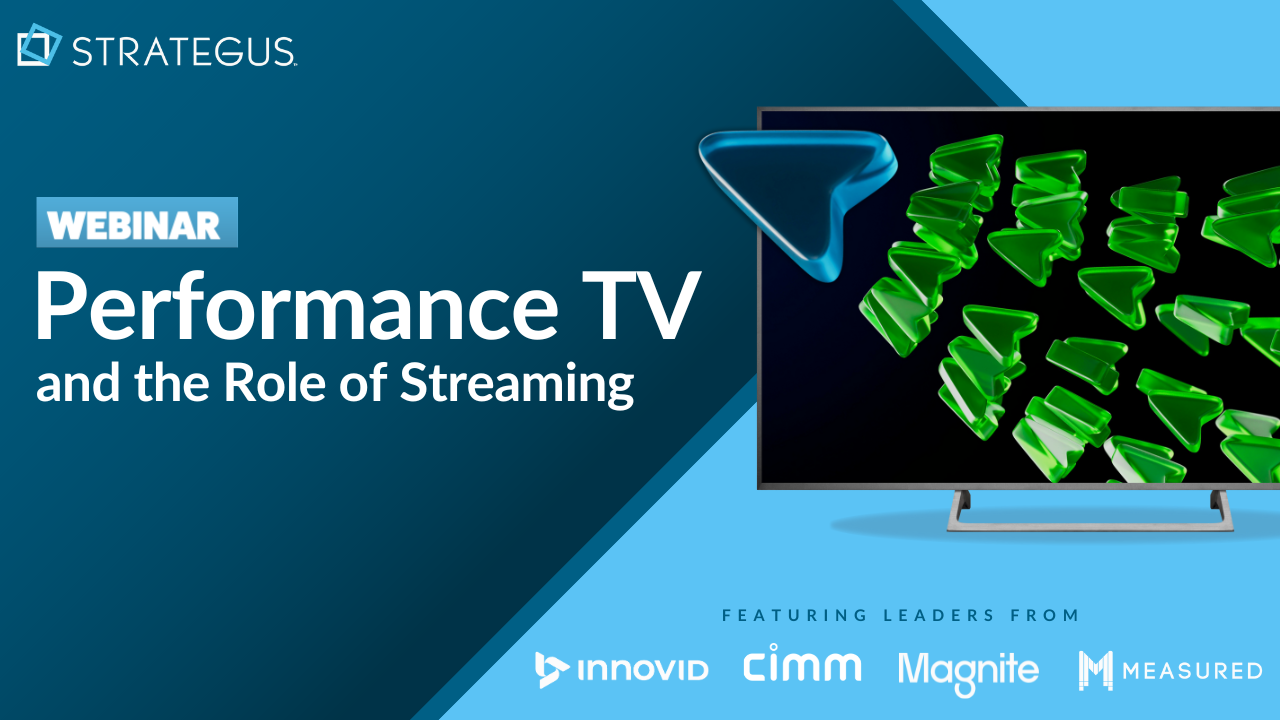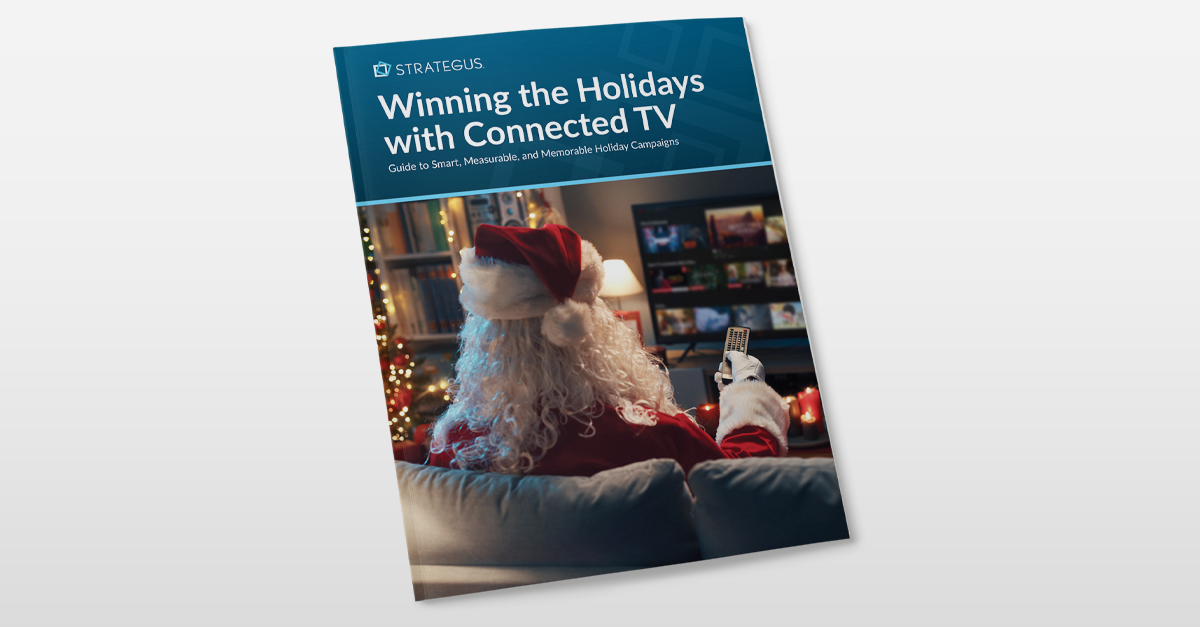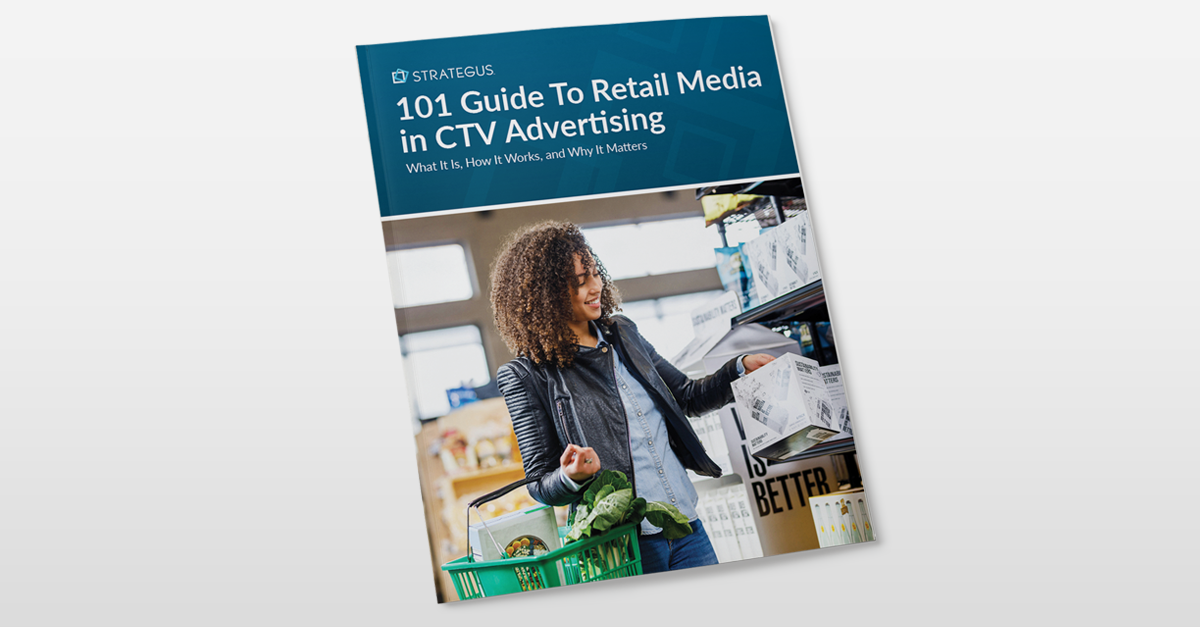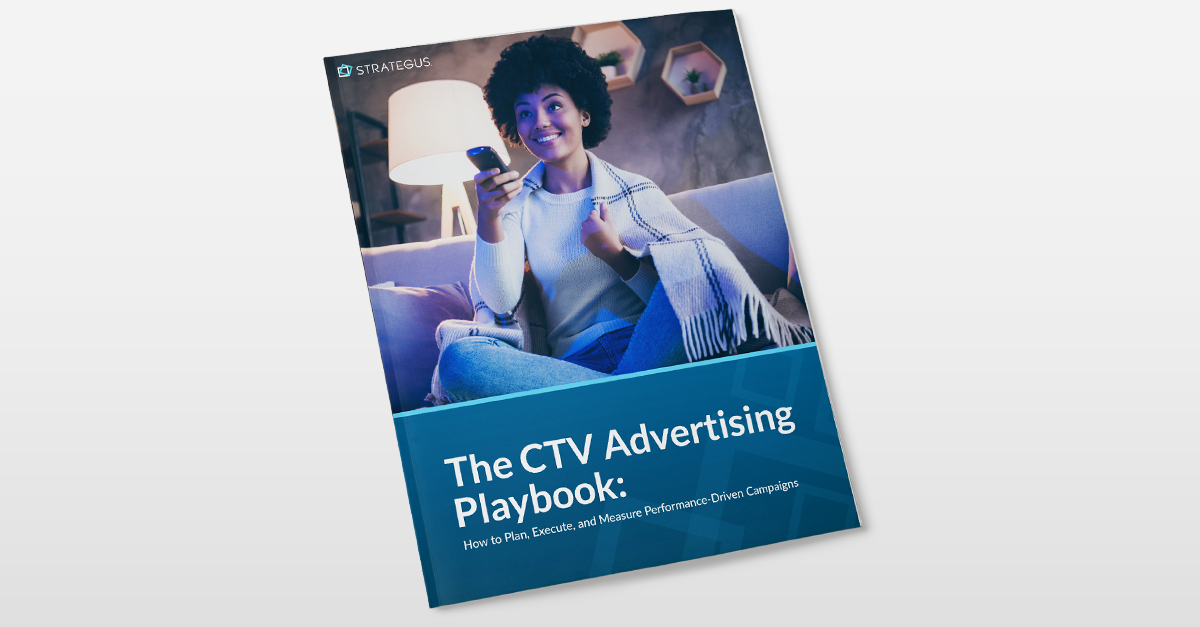- Home
- Strategus Blog
- 10 Best OTT Advertising Platforms (2025 Edition)
10 Best OTT Advertising Platforms (2025 Edition)
 Traci Ruether
Traci Ruether
18 minutes read
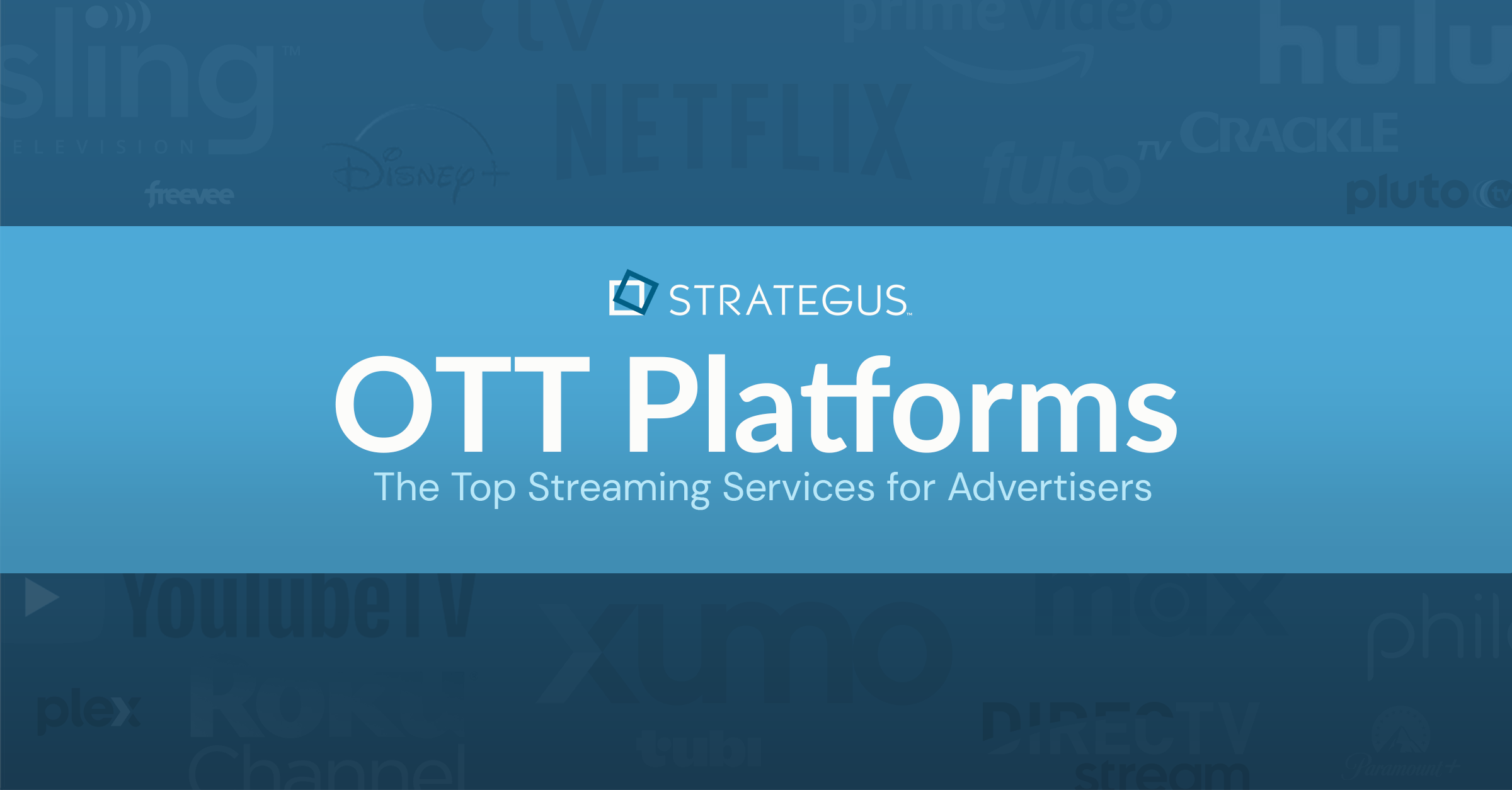
You could be doing everything right and still not get expected ROI on your OTT ads if you’re advertising on wrong platforms.
This guide cuts through the noise with the 10 best OTT advertising platforms of 2025, so you can stop wasting spend and start driving real results.
But before that, let’s get a few things out of the way.
What Are OTT Platforms?
OTT platforms are streaming services that deliver video content directly to viewers using the internet, rather than through satellite or cable providers. Max, the Roku Channel, and PlutoTV are all examples of OTT platforms.
While these services initially gained popularity by offering ad-free content, this is no longer the case. Every major OTT platform offers an ad-supported tier today. And for some (we’re looking at you, Amazon Prime), ad-supported streaming is now the default option.
Types of OTT Platforms
OTT platforms vary by how they deliver and monetize content. The three main types are HVOD, vMVPDs, and FAST:
- Hybrid Video on Demand (HVOD): Platforms like Netflix, Prime Video, and Disney+ offer ad-supported subscription tiers. These generate revenue from both ads and monthly fees, attracting viewers who want premium content at a lower price.
- Virtual Multichannel Video Programming Distributors (vMVPDs): Services like YouTube TV, Hulu Live, Sling, and Fubo deliver live TV channels with ads to paying subscribers. They appeal to cord-cutters who still want access to live sports and top cable networks.
- Free Ad-Supported Streaming TV (FAST): FAST apps like Tubi and the Roku Channel offer free, linear-style programming supported entirely by ads. Many come pre-installed on smart TVs, offering instant, no-cost viewing with minimal setup.
Today’s viewers typically use a mix: subscribing to a few premium services while supplementing with free, ad-supported ones.
Streaming Services That Serve Programmatic Ads
So which streaming platforms sell ad inventory? The chart below groups the top services by category.
This ad inventory can be bought in two ways: programmatically or via direct sales.
With programmatic CTV advertising, advertisers are able to automate media placement across various platforms to deliver targeted ads. This audience-centric approach ensures that marketers reach the right viewers no matter what they’re tuning into.
The 10 Best OTT Platforms for Advertising: Overview
- Amazon Prime Video: Scale + Shopper Data
- Netflix: Premium Brand Reach
- Disney+ and Hulu: Family-Safe Scale
- Pluto TV (Paramount): FAST Content Variety
- Tubi (Fox): High Reach Free
- The Roku Channel: Built-in Device Access
- Xumo Play (Comcast): Cable-Backed FAST
- FuboTV: Sports-First Ads
- Sling TV: Custom, Local Reach
- Philo: Budget Lifestyle Viewers
Not all OTT platforms are created equal. In fact, each comes with its own strengths and challenges.
Here’s a run down the top streaming services to consider when crafting connected TV advertising campaigns:
1. Amazon Prime Video: Scale + Shopper Data
Amazon Prime Video is unique from any other streaming service on this list because it doesn’t operate as a standalone service. Instead, Prime Video is included with all Amazon Prime memberships. This translates to a huge audience that’s far less likely to churn.
Need numbers? Prime Video’s churn rate sits at 8% while services like Discovery+ reach 43%.
For this exact reason, Amazon was bullish in their adoption of the ad-supported streaming model. While other premium services offered users a lower-cost ad-supported tier when making the switch, Amazon Prime Video went all by making ad-supported the default.
This wasn't just a minor tweak to their streaming service. It transformed Amazon into one of the largest players in OTT advertising overnight.
Today, Prime Video boasts one of the largest audiences and some of the most compelling audience targeting data. But while Prime’s reach and data granularity are impressive, other considerations like data portability and ease-of-use are also worth considering. Here are some of the pros and cons of advertising on Prime.
|
Amazon Prime |
|
|
Pros |
Cons |
|
|
2. Netflix: Premium Brand Reach
Netflix is the OG of streaming TV and continues to set the bar for high-quality content with a massive global user base. With award-winning originals, blockbuster films, and binge-worthy series, it commands attention from a highly engaged and diverse audience across age groups and regions.
For advertisers, this means the chance to align with content people actively seek out and spend hours watching.
However, Netflix's ad-supported tier is still evolving. Targeting capabilities remain limited to basic demographics, and access to advanced performance metrics or third-party data integrations is minimal.
Currently, Netflix does not support lower-funnel tactics like cross-device retargeting or detailed attribution modeling.
Despite these limitations, Netflix is a premium environment for brand-building campaigns. Its uncluttered ad load and strong content association create a highly receptive atmosphere for advertisers focused on awareness, perception, and recall.
As Netflix continues to develop its ad offering, its potential for performance marketing will likely improve. For now, use it strategically as a top-of-funnel, high-impact channel within a broader OTT mix.
|
Netflix |
|
|
Pros |
Cons |
|
|
3. Disney+ and Hulu: Family-Safe Scale
Disney+ is the biggest success story of legacy media companies that transformed to survive the streaming wars. In addition to owning a gold mine of coveted content through acquisitions of Marvel, Pixar, and countless others, Disney has forged strategic tech partnerships to stand the test of time.
Joel Cox, Strategus Co-Founder and EVP of Innovation, explains:
Disney has also gained full control of Hulu after acquiring the remaining stake and launched a super app with both services. This means that advertisers gain access to both audiences when advertising on the platform.
But with great power, comes great responsibility, and Disney’s recent move to favor direct supply paths has made it difficult for many advertisers to access this inventory.
|
Disney+ and Hulu |
|
|
Pros |
Cons |
|
|
4. Pluto TV (Paramount): FAST Content Variety
Pluto TV was one of the earliest entrants in the FAST (Free Ad-Supported Streaming TV) space, launching in 2014 as an April Fool’s joke, but it's now a billion-dollar business. Acquired by Paramount in 2019, Pluto has grown into a major player in the ad-supported streaming market, generating over $1 billion in annual ad revenue.
The platform offers more than 250 linear-style channels spanning news, movies, comedy, kids’ content, and niche categories like gaming and anime. It also features a deep catalog of Paramount-owned IP and a wide range of Spanish-language and local programming, making it attractive for advertisers targeting diverse or multicultural audiences.
Pluto TV is available across nearly every major device, including Roku, Amazon Fire, Apple TV, Samsung, and LG smart TVs. This built-in accessibility enhances scale and reach. For advertisers, Pluto offers a cost-effective way to reach large, lean-back audiences without high CPMs, ideal for mid- to upper-funnel campaigns in brand-safe, content-rich environments.
5. Tubi (Fox): High Reach Free
Tubi has quietly become a major force in the FAST ecosystem, recently surpassing Pluto TV in viewership and now accounting for 1% of all streaming time, according to Nielsen. Owned by Fox, Tubi offers a large, ad-supported library of free content pulled from studios like Warner Bros. Discovery, Lionsgate, MGM, and others.
While its linear-style channel offering is slightly smaller than Pluto TV’s, Tubi excels in user experience. Its intuitive interface and strong content discovery tools make it easier for users to find what they want, which helps drive engagement and longer viewing sessions. Tubi also appeals to a diverse audience, with a growing catalog of multicultural, genre-specific, and original programming.
Tubi is accessible across all major platforms and smart TVs, making it a scalable choice for advertisers. For brands seeking cost-effective, high-reach campaigns in a content-rich environment, Tubi is a strong contender. Its rising popularity, low CPMs, and Fox backing make it an increasingly valuable tool in the OTT advertising mix.
6. The Roku Channel: Built-in Device Access
The Roku Channel stands out in the FAST landscape with 350+ channels, a growing library of premium originals, and exclusive content like the “Weird” Al Yankovic biopic starring Daniel Radcliffe. As Roku continues investing in original programming, its content catalog becomes increasingly competitive with other major streaming players.
One of its biggest advantages is placement. The Roku Channel is front and center on Roku devices, making it one of the first things users see when they turn on their TVs. This default positioning drives high visibility and passive engagement, especially on Roku smart TVs and streaming sticks.
However, access is somewhat limited outside Roku’s ecosystem. Viewers can also tune in via Amazon Fire or select Samsung smart TVs, but the platform remains less accessible than Pluto or Tubi on other devices.
For advertisers, Roku offers valuable reach across built-in inventory, strong contextual placements, and reliable measurement tools. It’s best suited for campaigns looking to maximize exposure within the Roku ecosystem, particularly for brands targeting mainstream U.S. households in a lean-back, living room environment.
7. Xumo Play (Comcast): Cable-Backed FAST
Xumo represents Comcast and Charter Communications’ move into the FAST and streaming hardware space, positioning itself as a direct competitor to Roku. The platform is part of a bundled strategy that includes both a content hub and proprietary devices like Xumo TVs and Xumo Stream Boxes.
Xumo’s integration into Comcast-owned hardware allows for deep control over the user experience and prominent app placement, similar to how Roku prioritizes The Roku Channel. This gives Xumo a natural visibility advantage within its ecosystem and helps it scale across newly distributed smart TVs.
The platform is also accessible via Roku and Amazon Fire TV devices, expanding its footprint beyond owned hardware. However, its brand recognition and content library still lag behind more established FAST players like Tubi and Pluto TV.
For advertisers, Xumo offers a growing opportunity to reach cord-cutting households in a curated, ad-supported environment. While it may not yet rival the largest FAST platforms in scale, its cable-bundled roots and hardware-first strategy make it one to watch as Comcast and Charter expand distribution.
8. FuboTV: Sports-First Ads
Live sports have taken over streaming, and FuboTV has led that shift as the first vMVPD to focus almost entirely on sports programming. It offers an extensive lineup of live sports channels, making it a go-to platform for fans who want their favorite games without a traditional cable subscription.
But FuboTV is more than just sports. Its channel lineup also includes news, entertainment, and lifestyle programming, appealing to households with varied interests. This well-rounded content mix helps broaden its advertising value beyond just the sports vertical.
Fubo is also pushing the boundaries of CTV ad innovation, recently launching new ad units like interactive formats, pause ads, and marquee carousels. These formats give brands more creative options and drive higher engagement during live viewing moments.
For advertisers, FuboTV offers a premium, engaged audience and new ways to connect with viewers in real time. It’s a strong choice for brands looking to align with sports culture and experiment with next-gen ad formats.
9. Sling TV: Custom, Local Reach
Sling TV sets itself apart in the vMVPD space with its flexible, budget-friendly model. Its a la carte channel packages let viewers choose only what they want to watch—making it a popular choice for cost-conscious cord-cutters who still want access to live events, news, and entertainment without overpaying for unused networks.
For advertisers, this customizable viewing experience creates a valuable targeting advantage. Sling’s structure allows brands to reach audiences based on specific channel preferences, leading to more efficient and relevant campaigns. This precision makes Sling especially effective for advertisers seeking to minimize waste and engage high-intent viewers.
Sling TV also provides access to local channels in many markets, giving advertisers the ability to target regional audiences with tailored messaging. Whether you’re running a national campaign or trying to reach viewers in select cities, Sling offers scalable solutions.
Its combination of audience control, local reach, and affordability makes Sling a strong option for advertisers aiming to balance cost and precision in their OTT strategy.
Learn more about local TV advertising →
10. Philo: Budget Lifestyle Viewers
Philo has carved out a distinct niche in the vMVPD market by focusing exclusively on entertainment and lifestyle content. With a lineup rich in reality shows, lifestyle programming, and popular cable networks, it appeals to viewers who want relaxed, feel-good content without the high cost of traditional cable.
Its stripped-down, no-sports offering keeps subscription fees low, which helps attract a younger, budget-conscious audience that values both content and cost control. This makes Philo especially appealing to cord-cutters who are looking for simplicity and affordability without sacrificing popular entertainment.
For advertisers, Philo presents a focused environment to reach viewers deeply engaged with lifestyle and entertainment content. The platform’s lower price point also attracts users who are more open to value-based offers and promotions.
While it lacks the broad reach of full-service vMVPDs, Philo delivers strong engagement within a defined content niche, making it an ideal platform for brands targeting lifestyle-centric audiences with clear, value-driven messaging.
How to Choose the Right OTT Platform for Advertising
Choosing the right OTT platform depends on your goals, audience, and budget. Follow these steps to pick the best fit:
- Start with Your Goal: Are you trying to build awareness or drive results like clicks and sales?
- For awareness, use platforms with big reach like Netflix or Amazon Prime Video.
- For results, pick platforms with better targeting and tracking like Roku, Sling, or FuboTV.
- Know Your Audience: Choose a platform your audience actually uses.
- Families → Disney+, Hulu
- Budget-watchers → Tubi, Pluto TV
- Sports fans → FuboTV
- Lifestyle viewers → Philo, Sling
- Check the Ad Features: Look at the following:
- How well it can target your audience
- What ad formats it supports (video, interactive, pause ads)
- What performance data it gives you
- Make Sure It Works Everywhere: Some platforms only work on certain devices. For better reach, pick one available on all major smart TVs and streaming devices.
- Match It to Your Budget: On a tight budget? Use free, ad-supported platforms like Tubi or Pluto TV. Or want more control and support? Use platforms that offer managed services or work with a DSP.
- Look at Content Quality: Pick platforms with good, brand-safe content. This helps people trust your ads and keeps your brand image strong.
Pro Tip: Test a few platforms first. See what gives you the best return, then scale your spend there.
These steps are easier said than done, but well worth the effort. If you don’t have the in-house resources to tackle these challenges, consider working with a programmatic OTT partner like Strategus that offers cross-platform targeting and measurement capabilities.
Reach Every OTT Viewer – Without the Complexity
The OTT landscape is fragmented. Strategus makes it seamless.
We give you instant access to premium inventory across 200+ top OTT publishers and 843+ deal IDs—all through one platform.
With Strategus, you get:
- Cross-platform reach across networks, apps, and devices
- Full transparency into where your ads run
- Real-time ROI tracking and campaign optimization
Skip the guesswork. Reach your audience wherever they stream, with one powerful partner.
Contact us today to get started →
Frequently Asked Questions
How Much Does It Cost to Advertise on Pluto TV?
Pluto TV offers one of the most cost-effective options in the OTT space. CPM rates typically range from $10 to $20, depending on audience targeting and inventory availability. Pricing stays relatively low because Pluto delivers scale through free, ad-supported content, making it ideal for brand awareness and upper-funnel campaigns.
How to Buy OTT Advertising?
You can buy OTT ads through direct deals with specific platforms or programmatically using a demand-side platform (DSP). Direct buys give you more control over content placement, while programmatic lets you scale and target across multiple apps. Most advertisers use a mix of both to optimize reach and efficiency.
What Are the Best Ad Formats to Promote Sports Offers in 2024?
Use short, action-driven formats like 15-second mid-rolls, interactive overlays, and pause ads. These work well during live games on platforms like FuboTV or Hulu Live. Focus on time-sensitive CTAs, team tie-ins, and dynamic creative to connect with fans who tune in for real-time excitement and offers.
Can You Recommend Some TV Advertising Platforms That Are Known for Being Easy to Use?
Roku and Hulu offer user-friendly interfaces and strong self-serve options. You can easily launch campaigns using their ad managers. Amazon's DSP provides excellent tools but requires more experience. For beginners, platforms like Premion or Simpl.fi simplify execution with managed service and transparent reporting tools.
How to Allocate Budget Between OTT and Traditional TV Ads?
Start by defining your goal. If you need broad reach and brand visibility, split the budget evenly. For better targeting and tracking, allocate 60–70% to OTT. Use traditional TV for older demographics and OTT to reach younger, digital-first viewers. Always adjust based on performance data.
What Platforms Offer the Highest CPM for Interactive Publisher Ad Units?
FuboTV, Roku, and Hulu often command higher CPMs for interactive units like pause ads, overlays, and shoppable video. These formats drive deeper engagement, which justifies premium pricing. Advertisers pay more because these units allow real-time interaction, boosting both brand recall and conversion opportunities.
Can You Recommend Some TV Media Buying Platforms That Offer the Best Cost and Transparency?
The Trade Desk offers strong cost efficiency and clear reporting. Simpli.fi provides local-level targeting with transparent pricing. Basis Technologies (formerly Centro) simplifies multi-channel buying and offers real-time insights. These platforms help marketers control spend while ensuring full visibility into ad delivery and performance.
What Are the Best Data Sources for TV Advertising?
Amazon uses eCommerce and shopper data for unmatched targeting. Roku gathers first-party device and viewing behavior. Nielsen and Comscore offer third-party audience measurement. Oracle, LiveRamp, and Experian provide consumer segments for advanced targeting. Combine multiple sources for precise reach and better attribution tracking.
How Does Advertising on OTT Networks Work?
OTT ads run through apps on internet-connected devices like smart TVs or streaming boxes. You upload video creatives, define your audience, and set budget rules through a DSP or publisher platform. Ads then appear before, during, or after content, targeting viewers based on behavior and demographics.
What Streaming Services Have Local TV?
Platforms like YouTube TV, Hulu Live, Sling TV, and FuboTV offer access to local channels in many markets. They stream live local news, weather, and sports, making them useful for advertisers targeting regional audiences. Availability depends on ZIP code and licensing agreements in each area.

Traci Ruether is a content marketing consultant specializing in video tech. With over a decade of experience leading content strategy, she takes a metrics-driven approach to storytelling that drives traffic to her clients' websites. Follow her on LinkedIn at linkedin.com/in/traci-ruether or learn more at traciruether.com.
Strategus is a managed services connected TV(CTV) advertising agency with over 60,000+ campaigns delivered. Find out how our experts can extend your team and drive the result that matter most.
Talk to an Expert
Table of Contents
Seeking a Custom CTV Strategy That Delivers?
What to read next
App Event Tracking: Tie Mobile App Activity to CTV Campaigns
Let’s say you’re running a CTV campaign for a personal finance app.
5 minutes read

Stop Guessing Who Your Audience Is — Let Their Apps Tell You
Connected TV (CTV) targeting often falls in one of two camps.
8 minutes read
See Who Bought After Your Ad + How Much They Spent
You can’t improve what you can’t measure. And for years, that’s been a major problem with TV advertising.
4 minutes read

First-Party Attribution: Match Ads to Sales With CRM Data
The value of first-party data continues to grow.
7 minutes read



